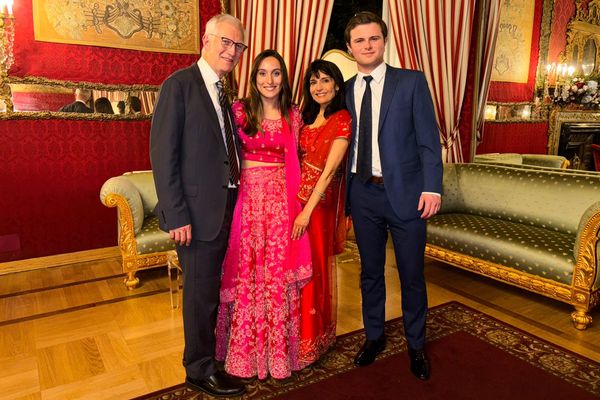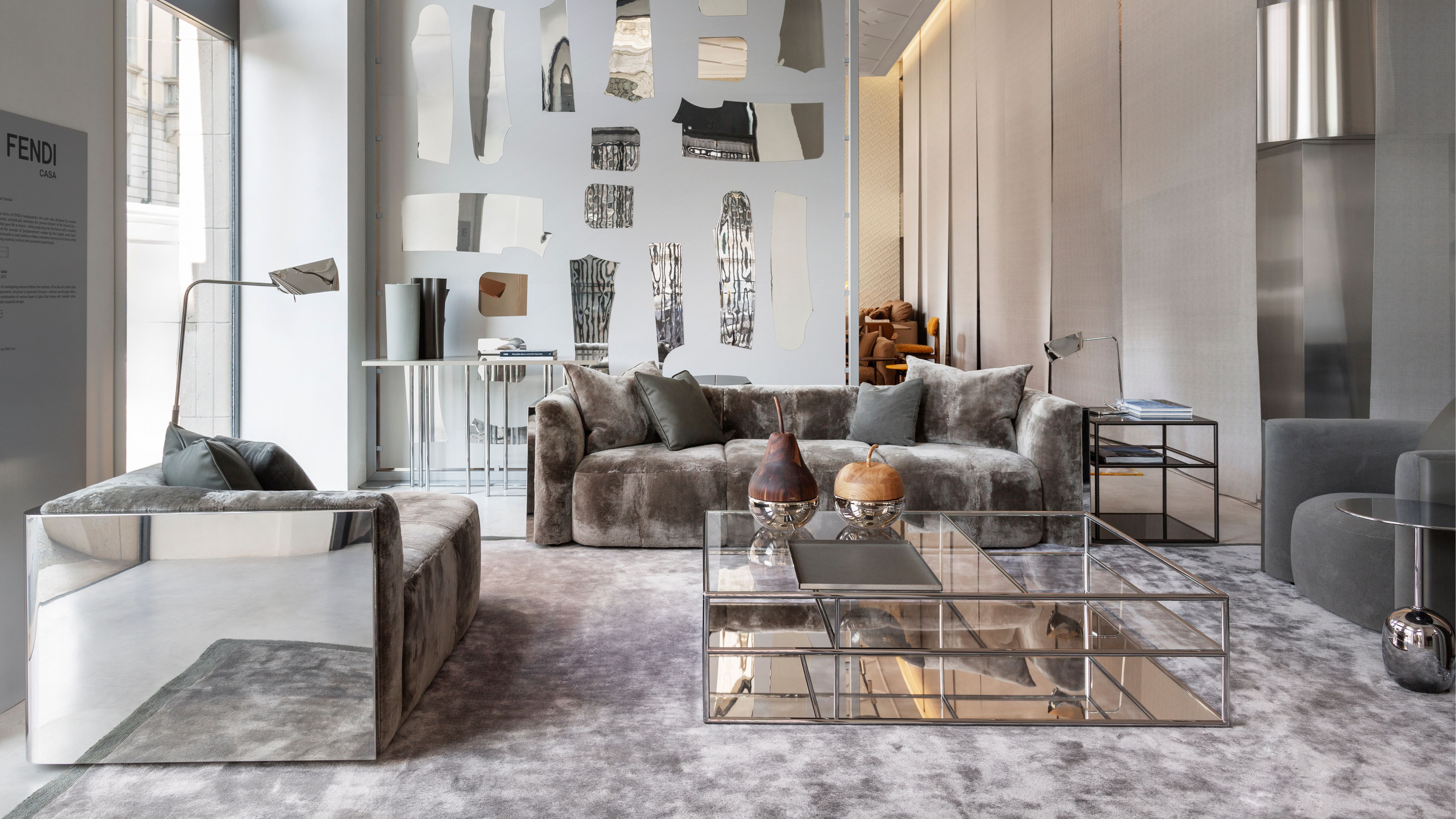
The week — Milan Design Week — has arrived. Now in its 63rd edition, Salone del Mobile brings with it the usual swirl: editors, curators, students, collectors, brand minds — all with an eagle eye trained on what’s next. Officially, it’s still the world’s largest furniture fair. Unofficially? It’s fashion week in disguise — call it fashion’s favorite off-runway stage.
Heritage houses — Loro Piana, Jil Sander, Roberto Cavalli, Dolce & Gabbana, Saint Laurent, Missoni, Rimowa, and Hermès, to name a few — are showing up to Milan Design Week 2025 with activations just adjacent to their usual remit. They’re not abandoning the catwalk, but they are cross-pollinating, hedging their bets.
This season, Loewe has made 25 teapots. Miu Miu is reviving its literary club, this time entirely dedicated to Simone de Beauvoir — two days of discussions, salons, and events that feel less like marketing and more like a scene. La DoubleJ is offering tarot readings. It’s less about obvious cash grabs, less about churning out glossy, ephemeral trends — and more about world-building.
So yes, you might spot the occasional Livingetc editor at Bar Basso (how could you not?) But more likely, you’ll find us weaving through installations that feel like the future — of fashion, of furniture, and everything in between.
Below, the design week fashion moments not to miss.
D&G Casa
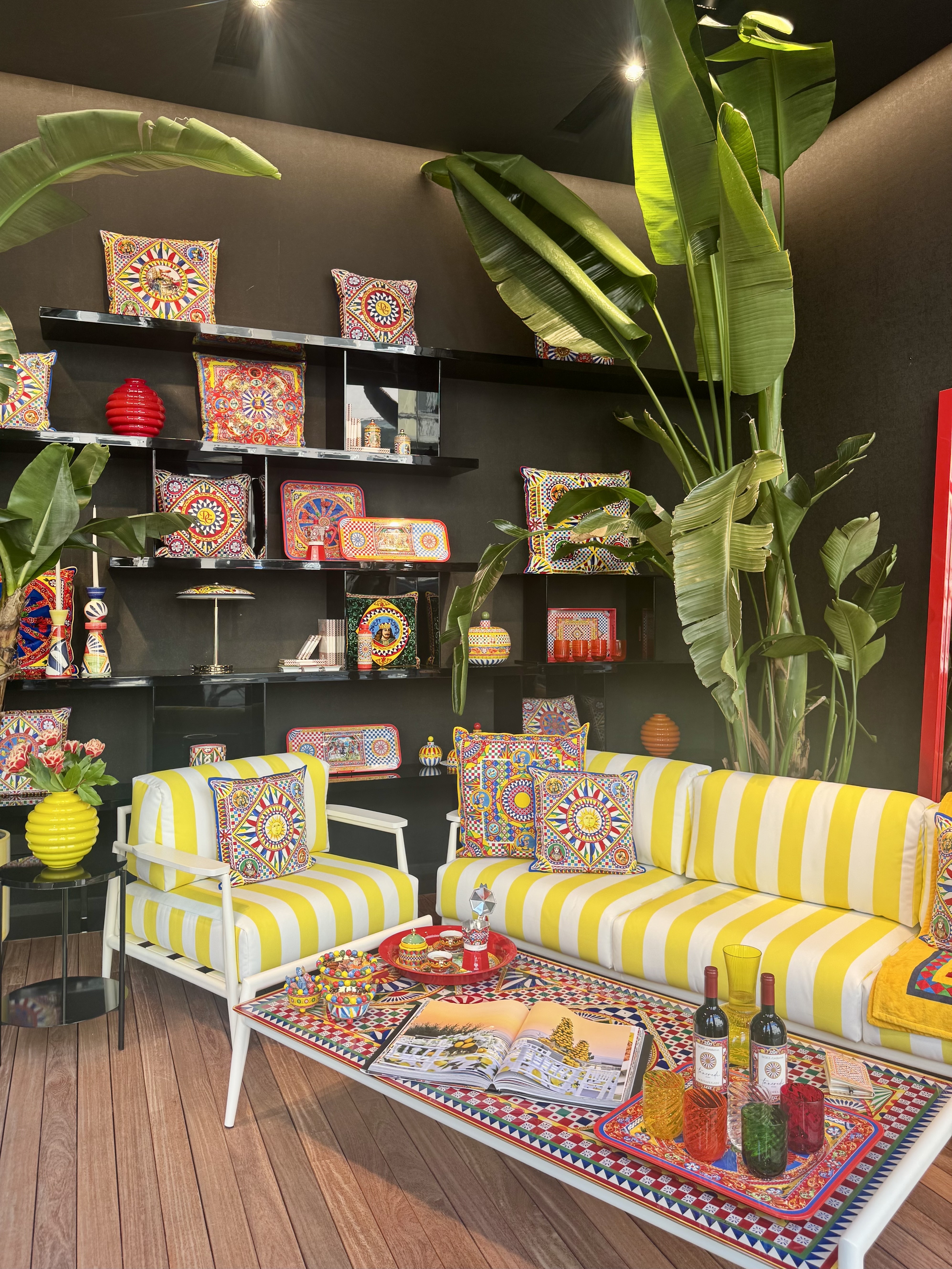
Live, laugh, la dolce vita — few channel maximalist Mediterranean quite like Dolce & Gabbana, and D&G Casa, the brand’s interiors arm, delivers the fantasy in full.
Its latest debut, Verde Maiolica, captures the dynamically lush, citrus-laced spirit of southern Italy in a riot of green — rendered in glazed porcelain tableware and coordinating linens. It’s all on view at the D&G Casa flagship on Corso Venezia 7.
Because for Dolce, more isn’t more — it’s simply the minimum.
Hermès
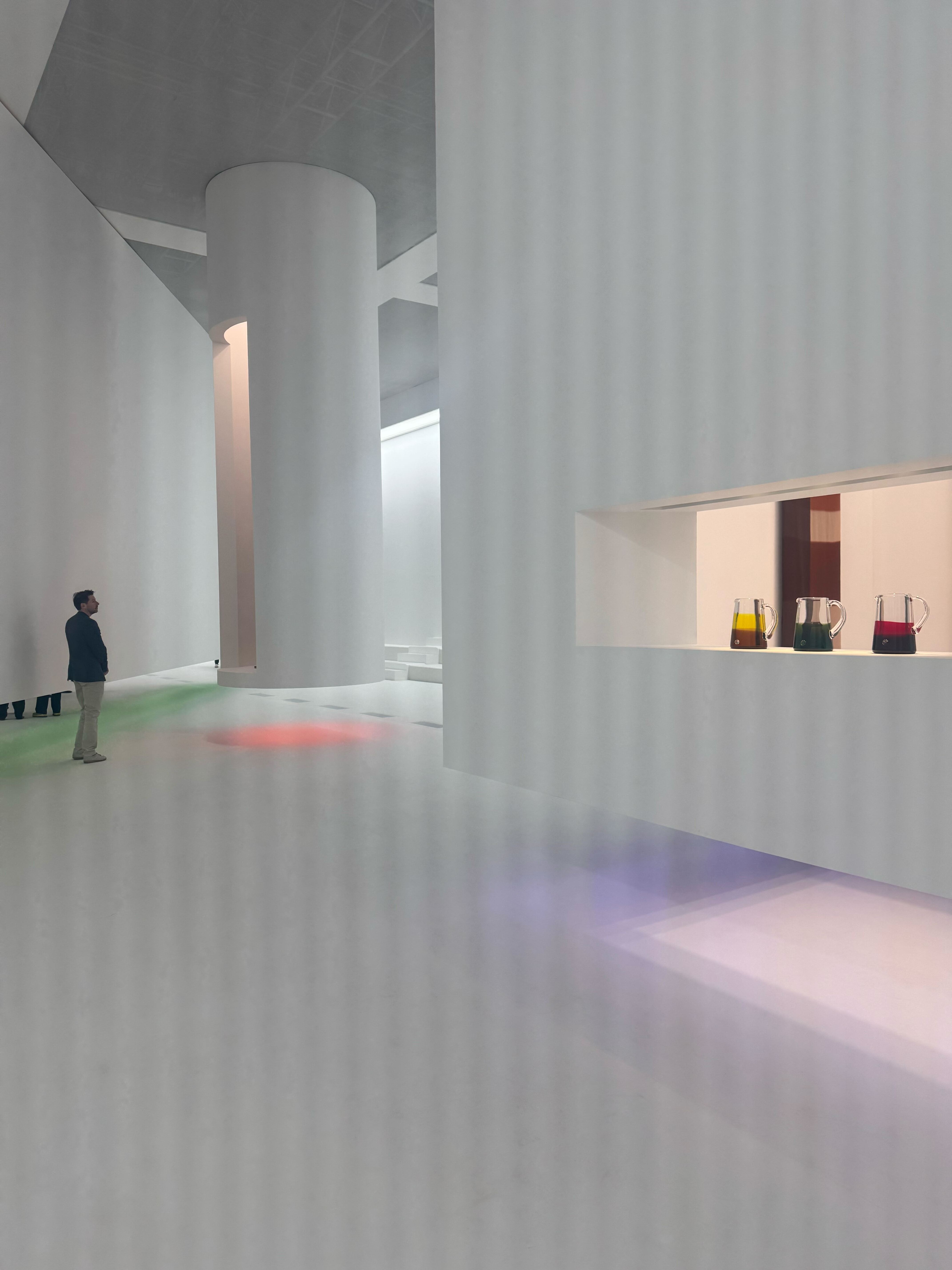
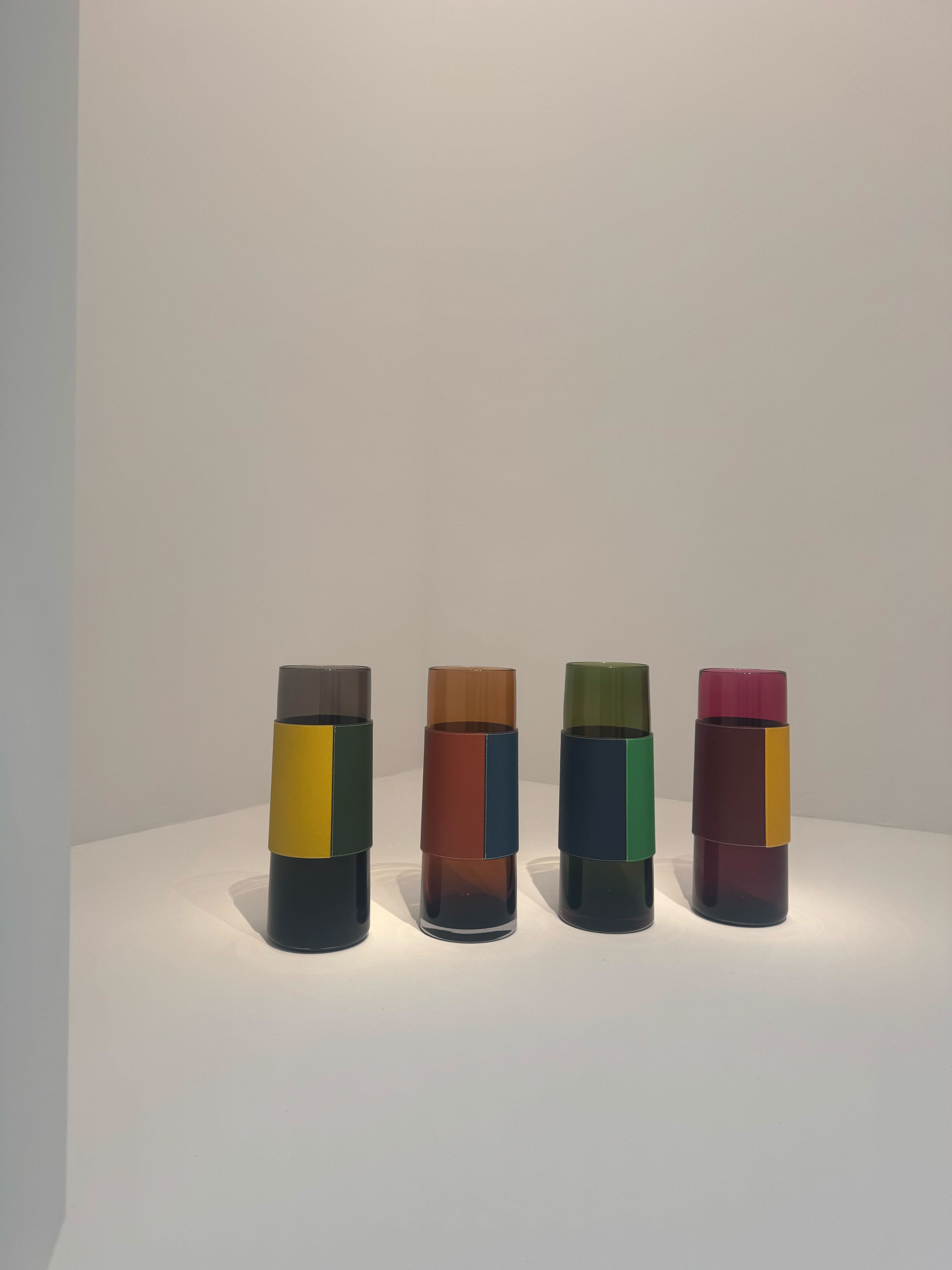
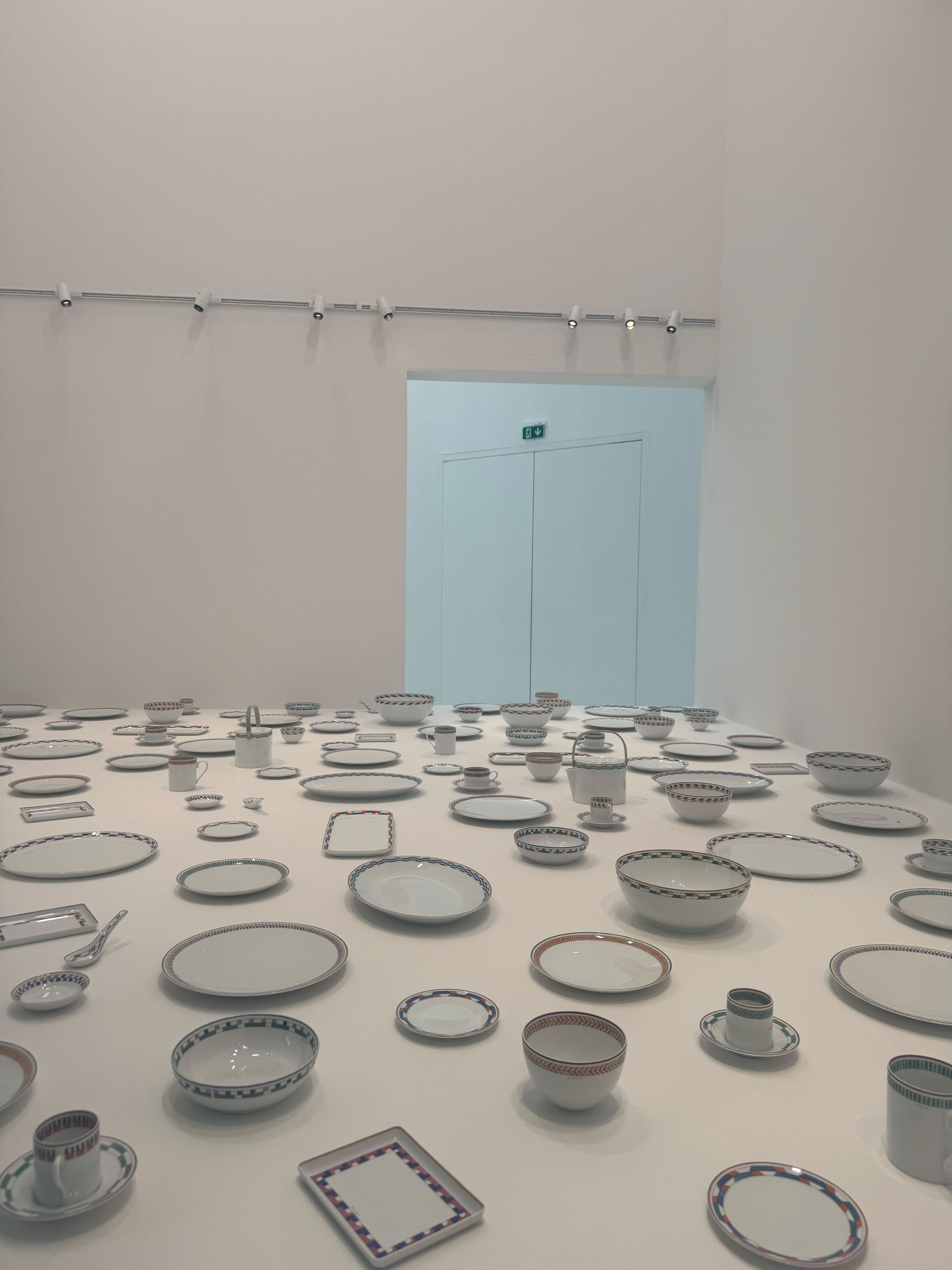
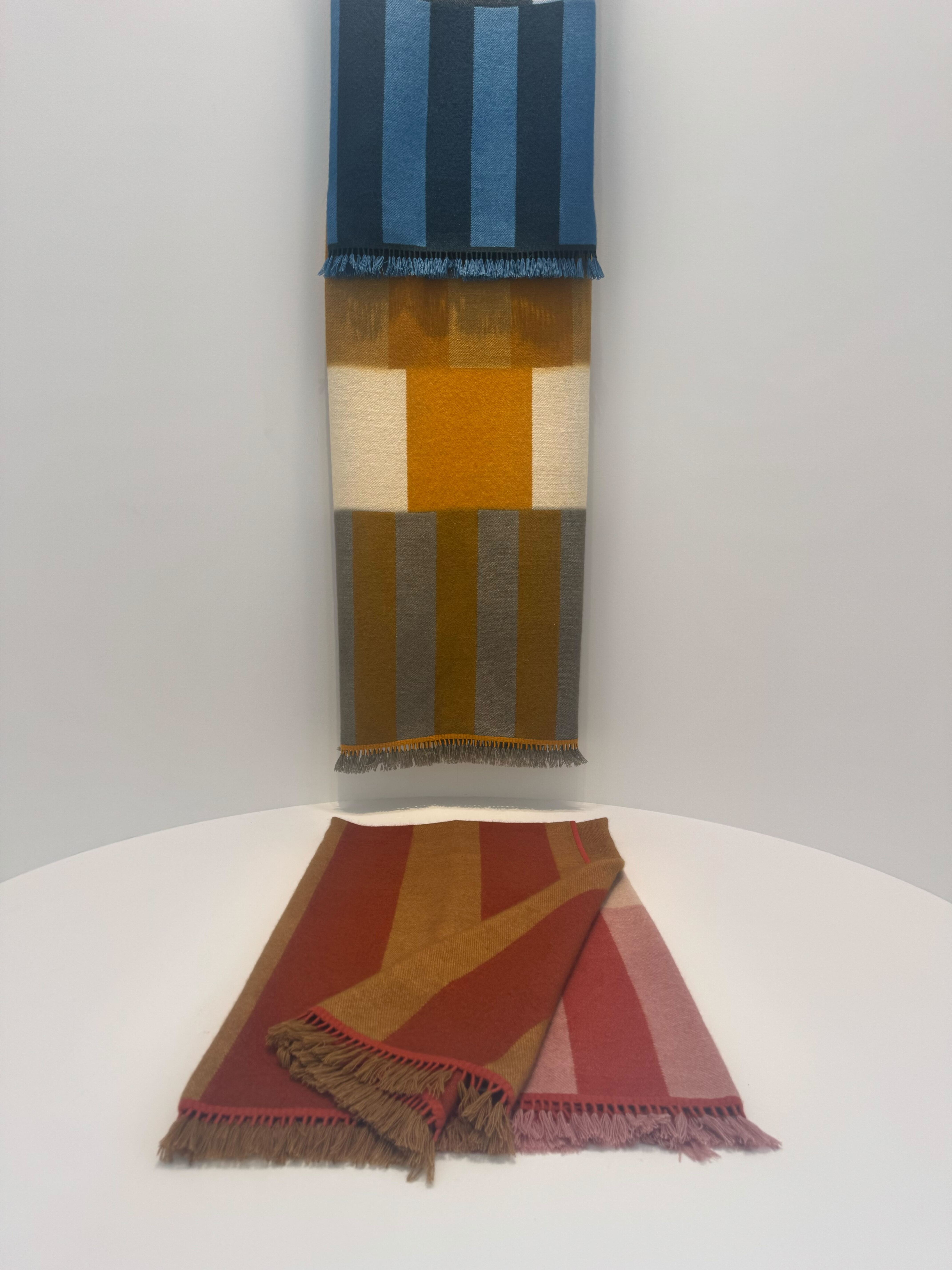
Hermès doesn’t take on a project unless it can master it — which is exactly why the French house has delivered some of Milan Design Week’s most quietly radical moments since it first entered the scene over a decade ago. This year is no exception. If others zagged right, Hermès moved deliberately, elegantly left.
At La Pelota — a pristine post-war swimming pool turned cathedral of light — suspended vitrines (closer to altars than display cases) hold what the brand calls “perfect objects.” There are mouth-blown glass tables, and colored lights that cast soft halos. But what stands out is what isn’t there: spectacle.
Designed by Charlotte Macaux Perelman and Alexis Fabry, the collection leans into suggestion — not just objects, but the aura they leave behind.
Longchamp
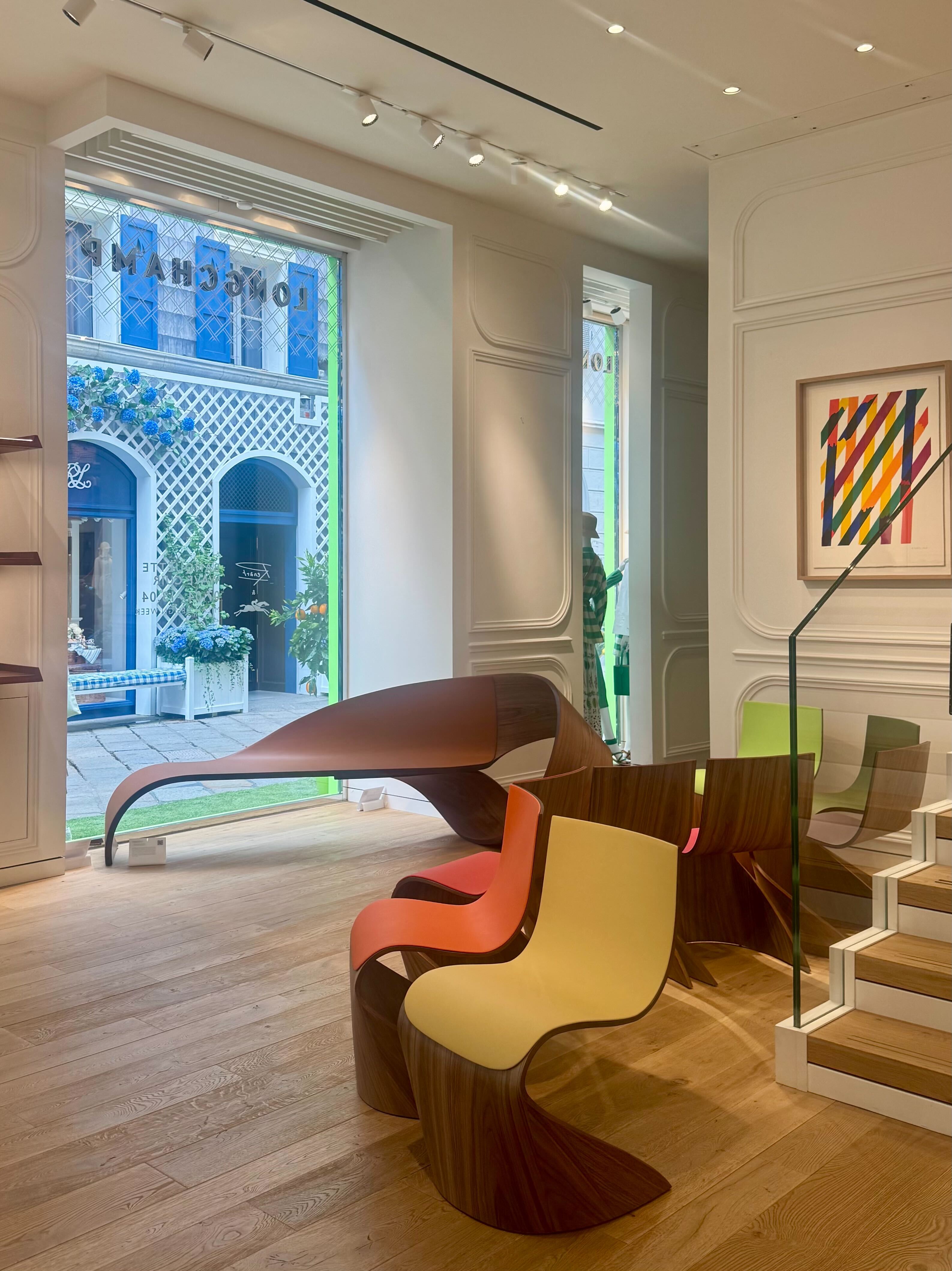
How do you make two of design’s most substantial materials — wood and leather — feel weightless? Leave it to Pierre Renart, whose latest collaboration with Longchamp manages exactly that.
This isn’t the first time the Parisian house has tapped Pierre’s talents (their partnership began in 2021 with the now-iconic Wave coffee table), but it is the first to bring Longchamp’s signature leather into the equation — and arguably, the most striking.
The collection includes the Wave banquette and a set of eight Ruban chaises — all crafted from American walnut and wrapped in supple Longchamp cowhide. Sinuous and fluid, they bend like ribbon, defying the rigidity of their materials.
Mixed materials have been having moment, but bringing this kind of lightness to leather? That’s something else entirely — catwalk, coffee table, or otherwise.
Fendi Casa
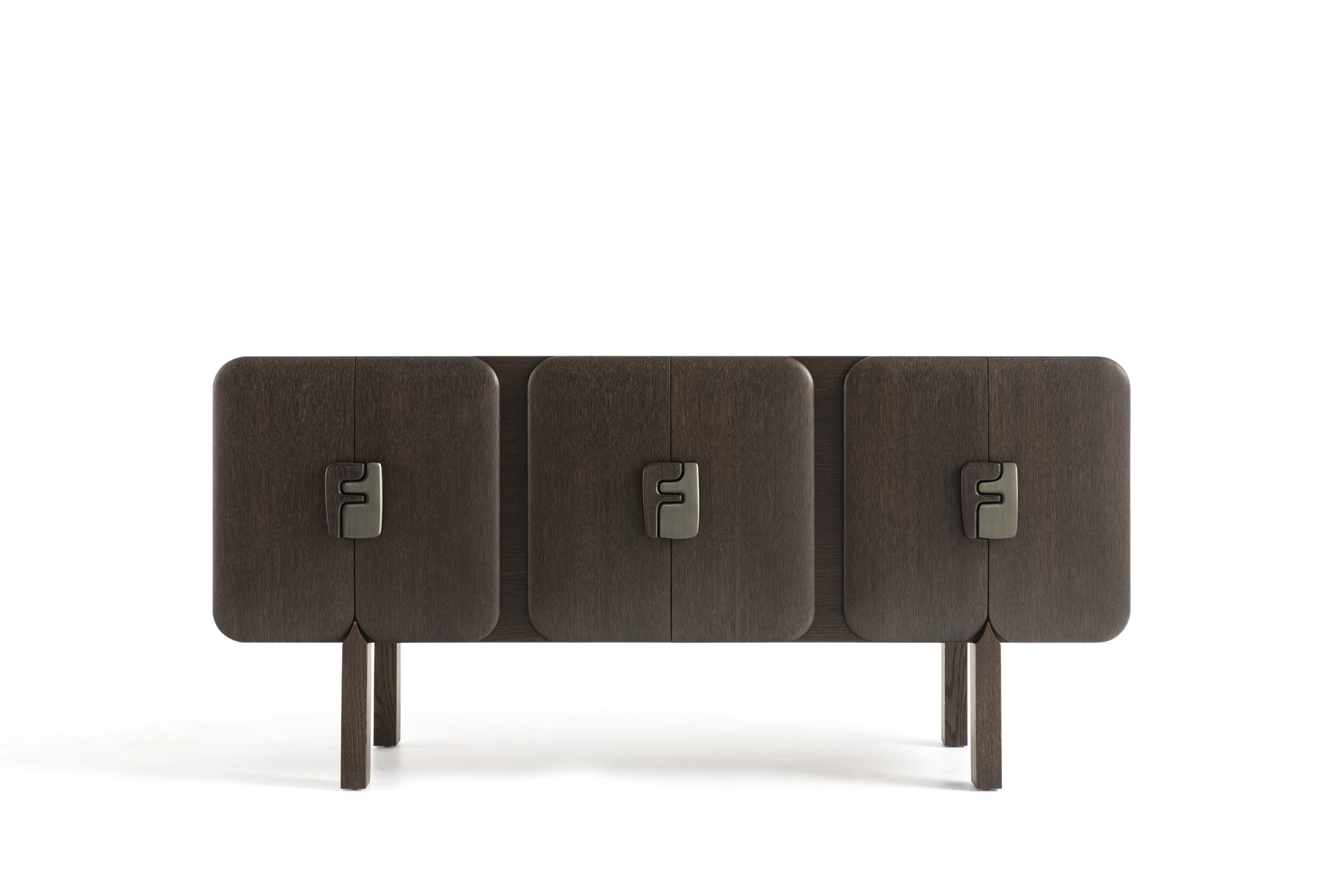
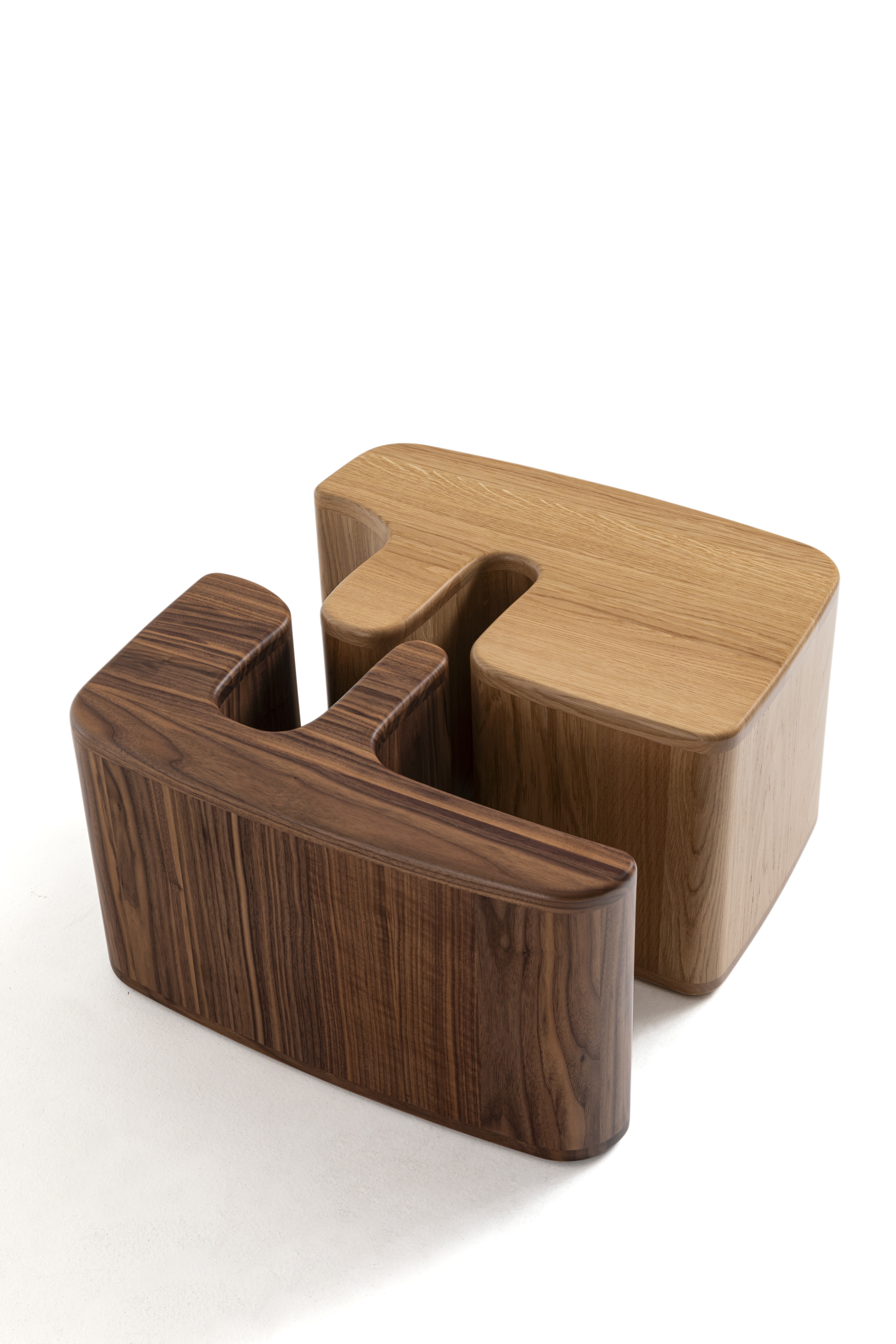
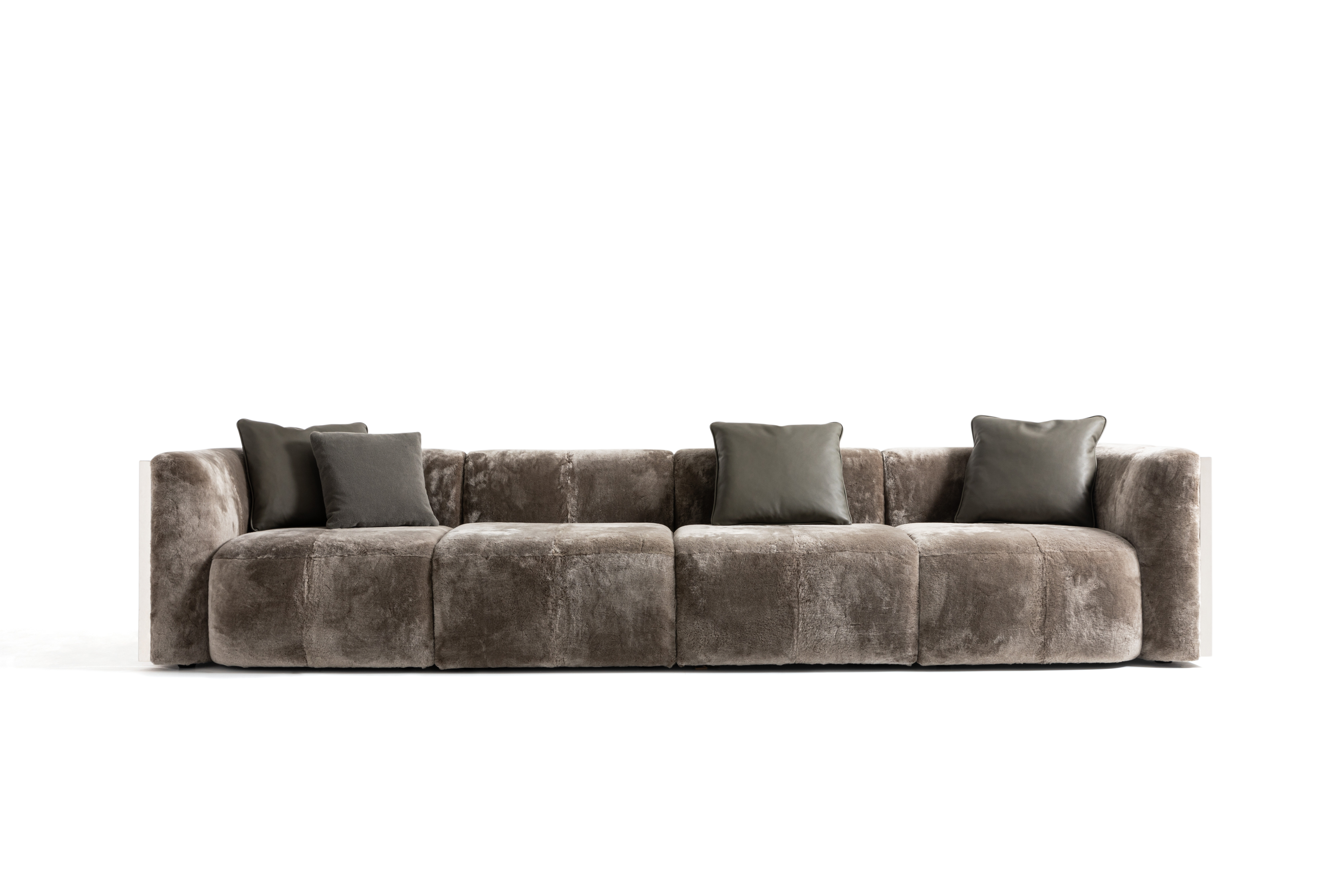
Most fashion brands with home lines don’t really do interiors. But Fendi? Fendi does furniture. The house has been all-in since the inception of Design Miami 17 years ago, and under its FENDI Casa line, continues to produce full-fledged interiors collections: sofas, seating systems, dining tables, even outdoor pieces — all with the same precision and polish as its runway.
For Milan Design Week this year, FENDI Casa unveils a robust new lineup inside its Piazza della Scala boutique. Among the standouts: the modular Later sofa by Ceriani Szostak — a square, architectural frame (offered in metal, leather, or fabric) that cradles a plush seat. Structure surrounding softness — a FENDI Casa specialty.
Elsewhere, the house’s iconic “FF” logo gets reimagined in furniture: the Efo coffee table by Peter Mabeo softens the motif into sculptural curves, while the accompanying Efo side table and cabinet (in yellow ceramic, wood, or both) play with scale and material tension.
Light meets shadow. Rigid meets fluid. High-gloss meets hand-hewn. As ever for Fendi, magic lies in its contradictions. These are key elements of the emerging Milan Design Week Trends 2025, too.
Jil Sander
Everyone’s talking about Jil Sander — and not just because of Simone Bellotti’s recent appointment as creative director.
This week marks a different kind of return: the woman herself. A decade after stepping away from her eponymous label (for the third and presumably final time), Jil Sander reemerges — not on a runway, but at Milan Design Week, in collaboration with storied German furniture maker Thonet.
The project reimagines two Bauhaus design icons: the B 97 side table (1933) and Marcel Breuer’s S 64 chair (1929), distilled into two new lines — Serious and Nordic.
Serious reads sultry: glossy metal, dark Viennese caning, and Italian bull leather in bordeaux, black, and olive. Nordic is the cool counterpart, with white-painted oak, pale leather, and nickel frames. The changes are subtle, but distinctly hers.
A reminder that even off the catwalk, Jil Sander’s restraint still resonates.
We’re living in a moment where chairs wear Louboutins (you might recall Pierre Yovanovitch’s red-bottomed heels-on-chairs collaboration with the French footwear house last year). A Chanel couch doesn’t sound like a punchline anymore — it sounds like a prophecy. The future might just be lifestyle.
On that note, this is what NYFW Fall/Winter 2025 would look like... if it had a floor plan.




